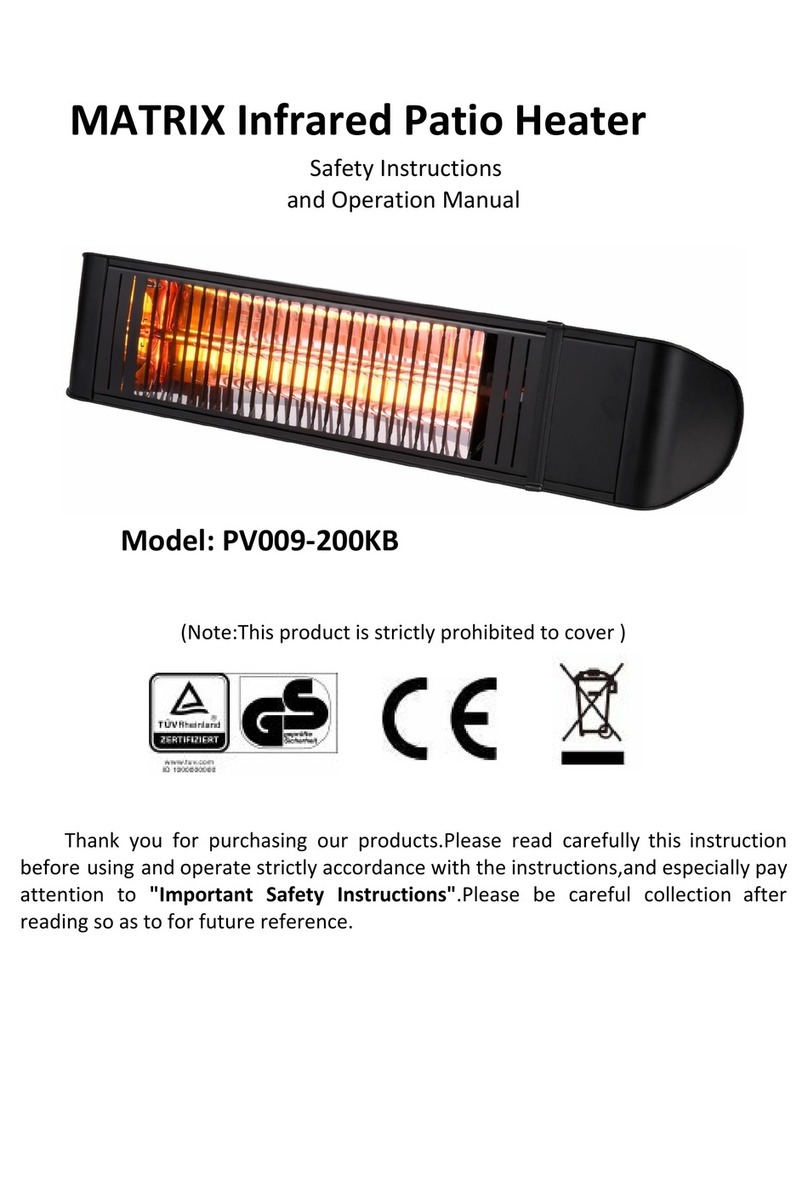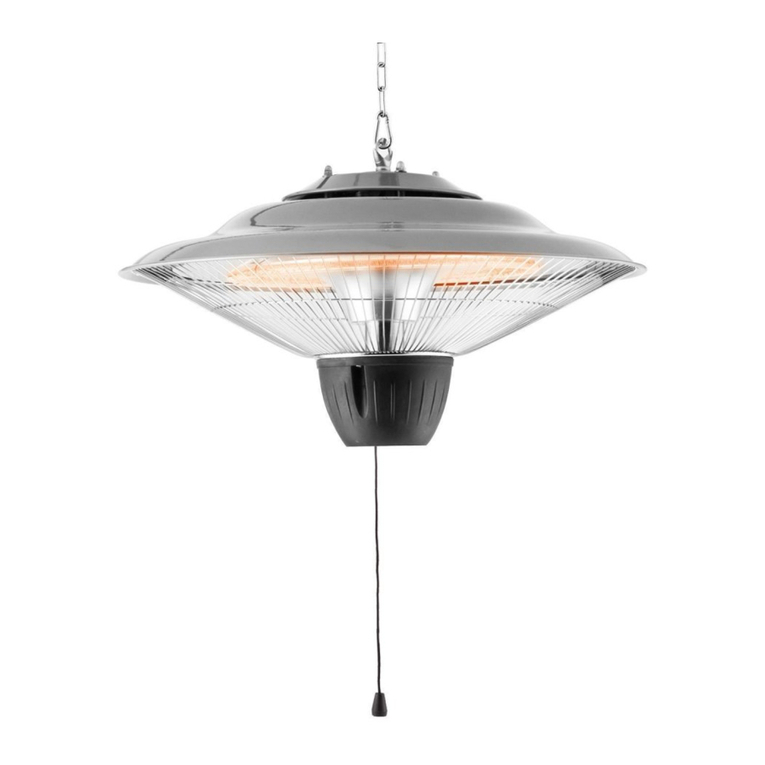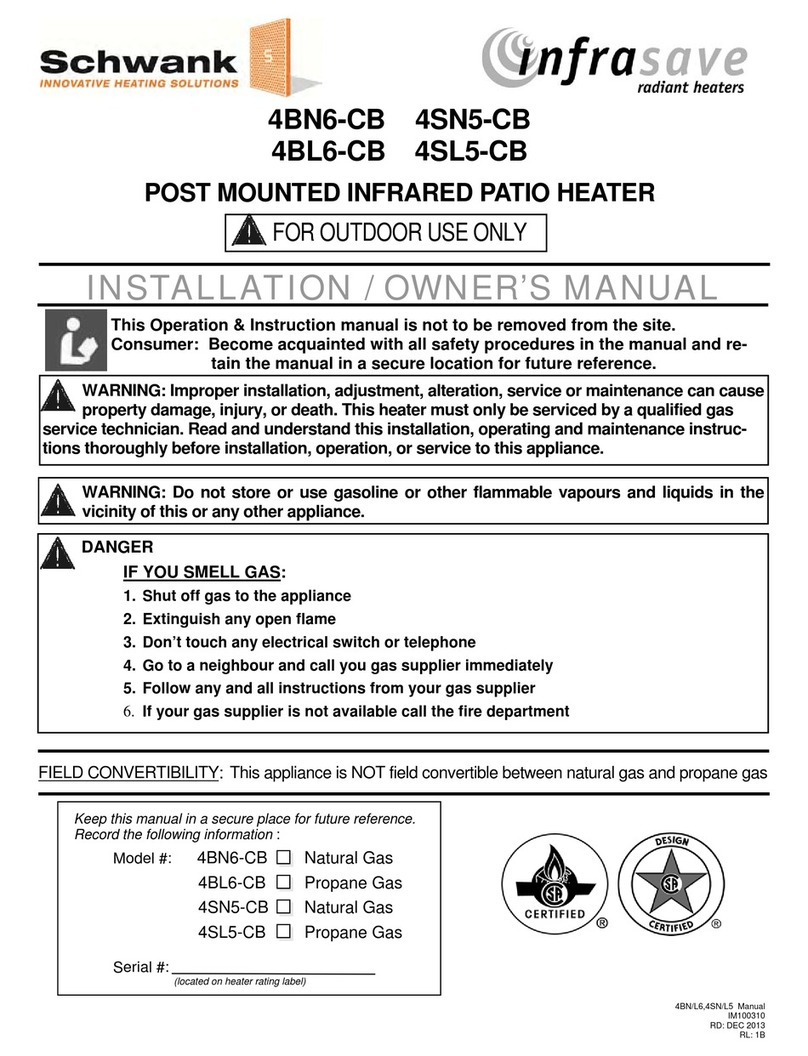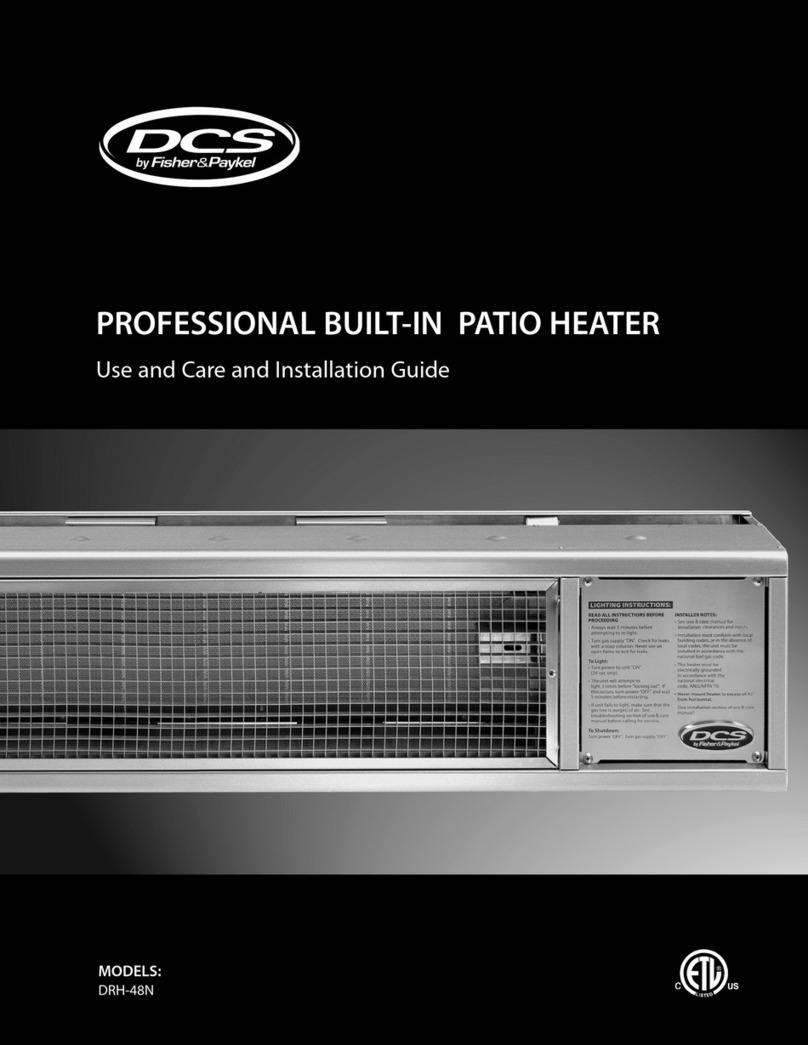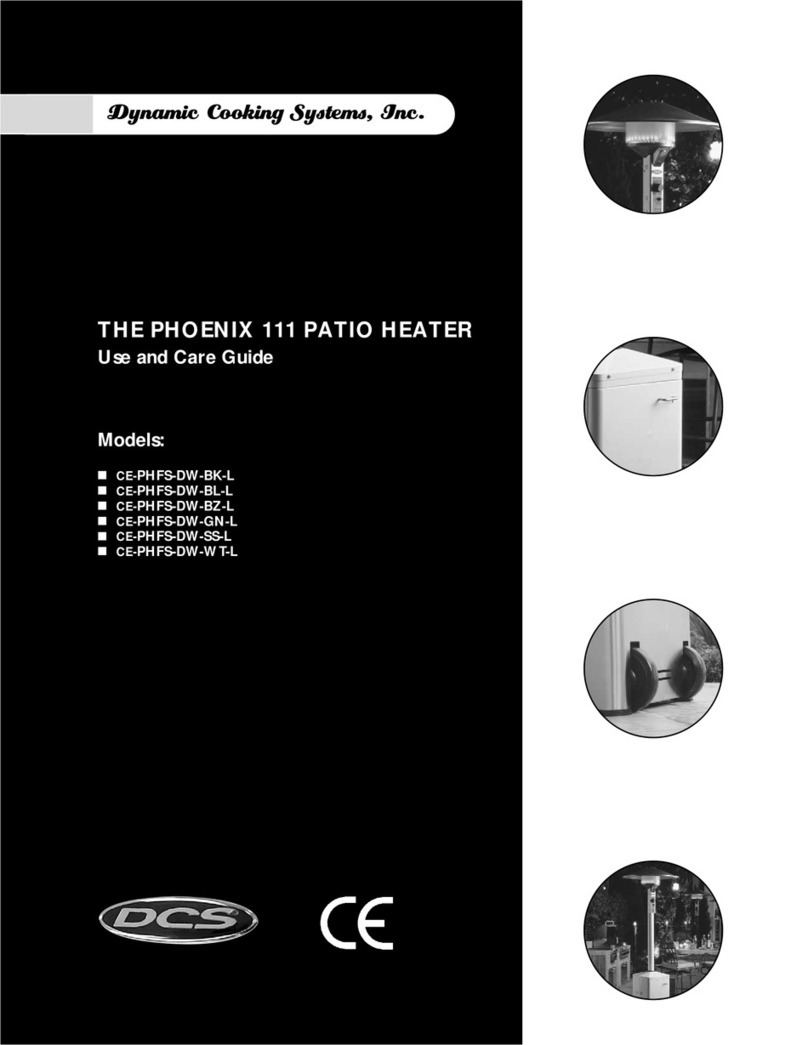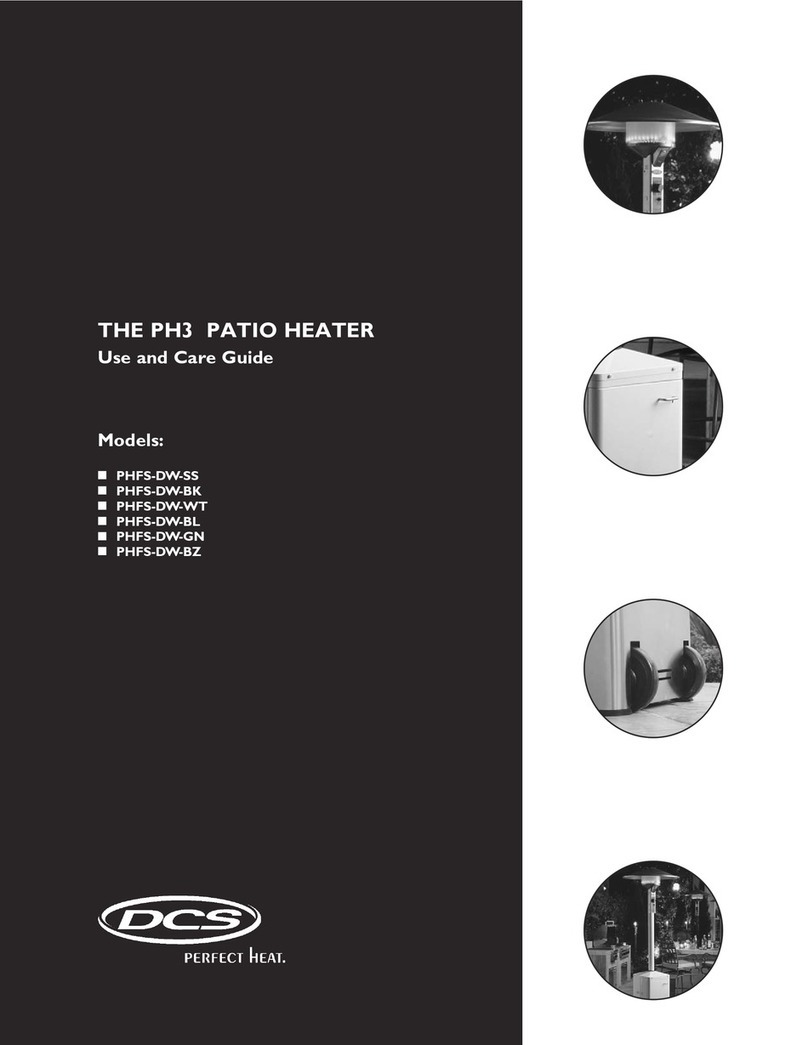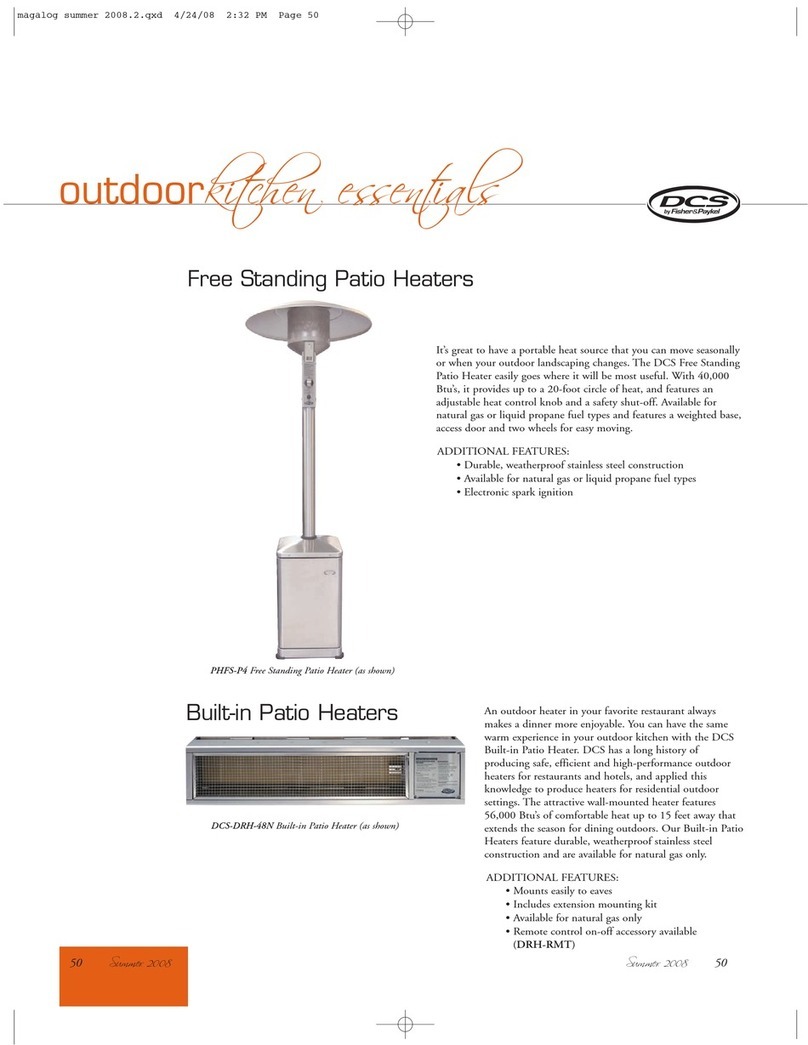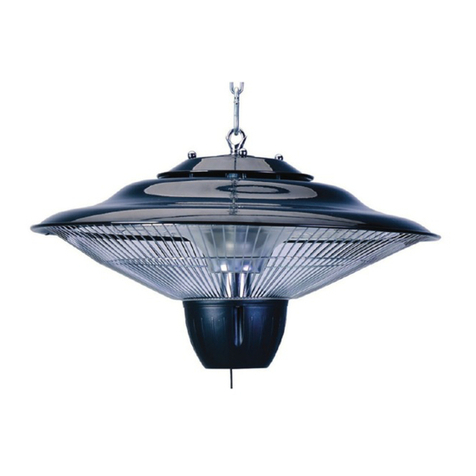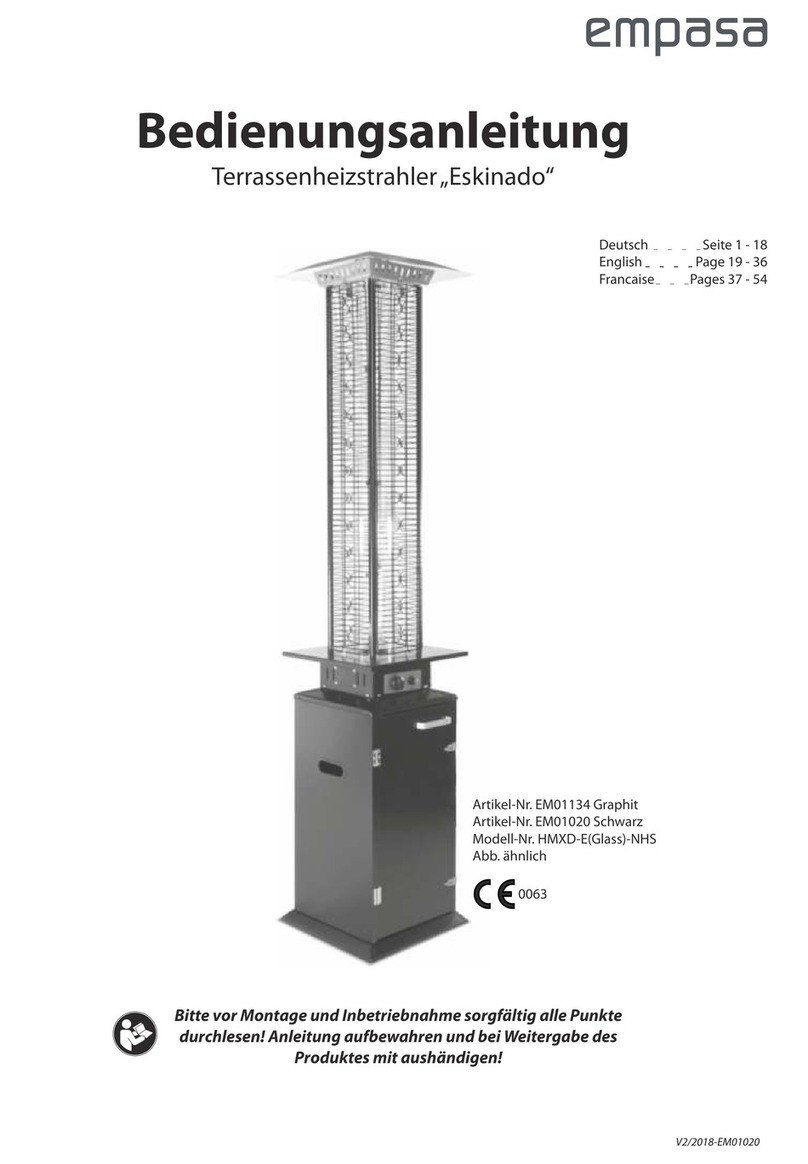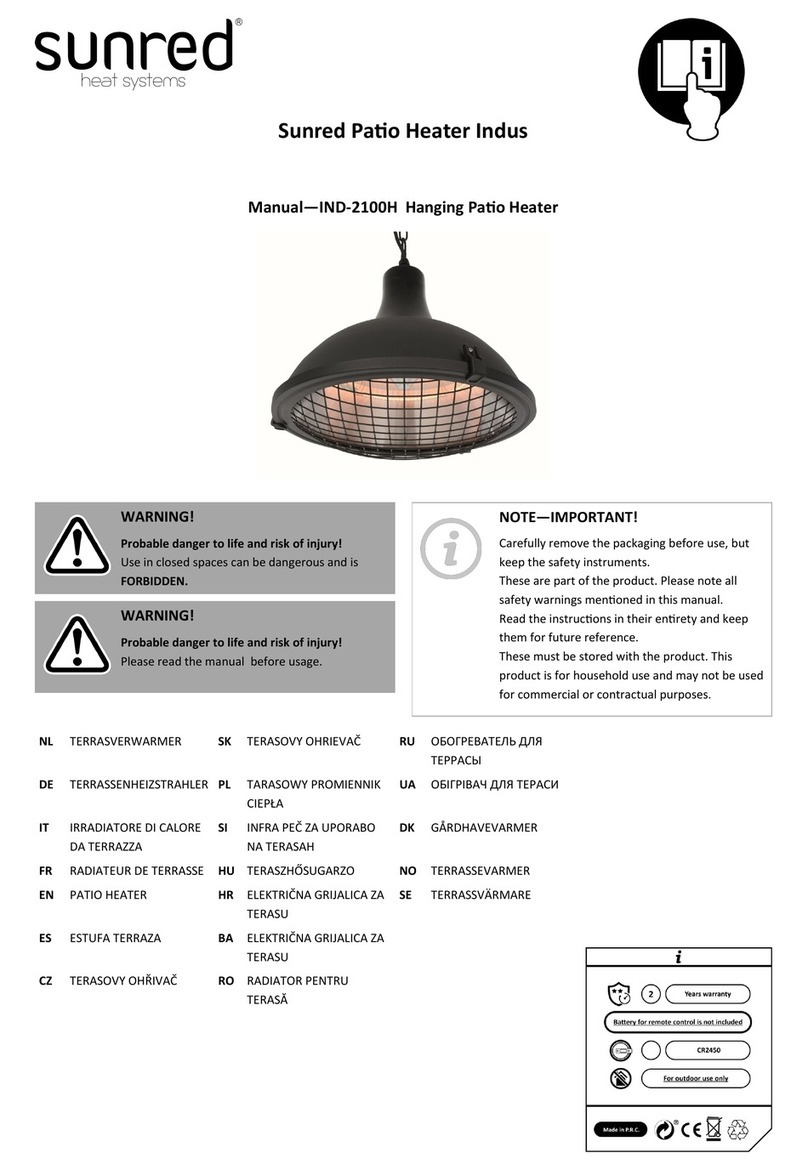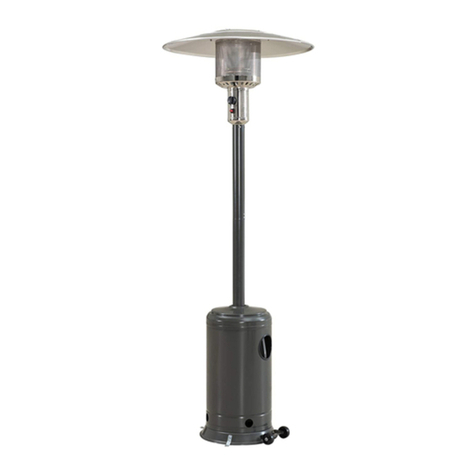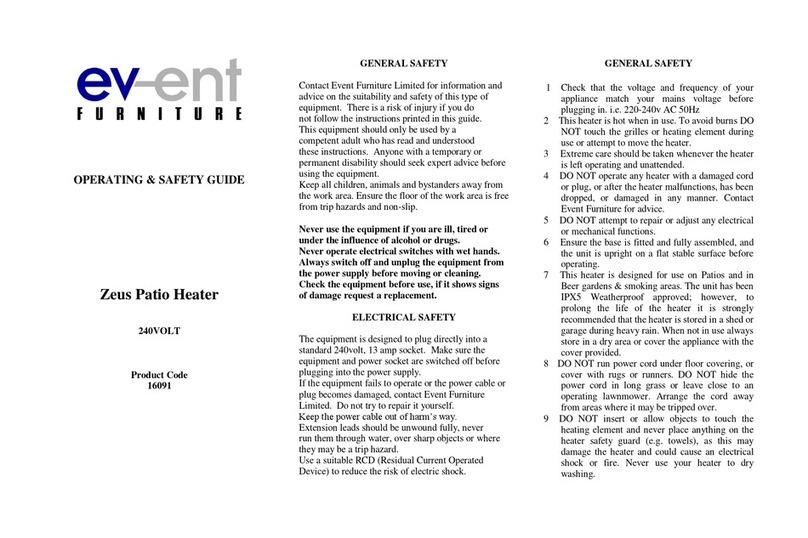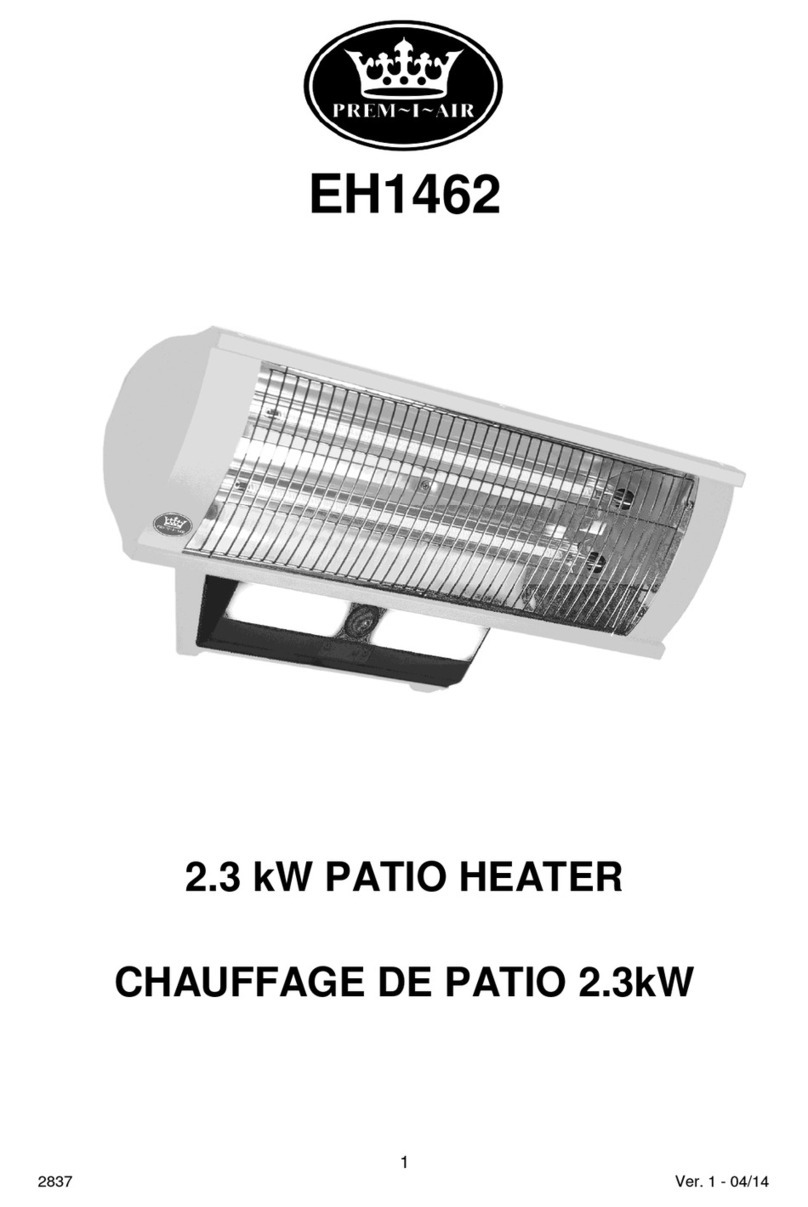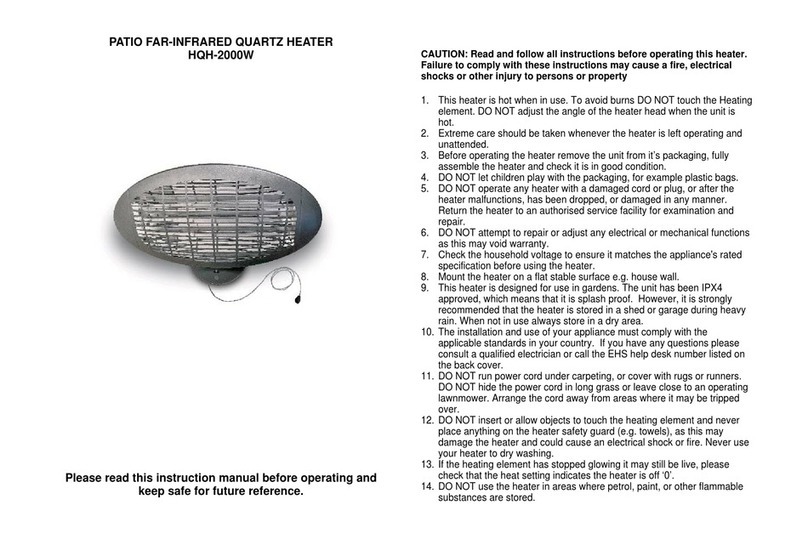3
■
Read and become familiar with the entire manual.
■
Do not use in an explosive atmosphere, keep heater away from areas where gasoline or other flammable liquids
or vapors are stored or used.
■
Before each use, check for damaged parts such as hoses, regulators, pilot or burner.
■
Do not attempt to alter unit in any manner, ie: shorten post length, bypass safety valve or operate heater without
the reflector.
■
Heater must always be placed on a hard and level surface.
■
Always maintain proper clearance to combustible materials. (Top =19’’; sides and rear =27”), see page 12.
■
Never replace or substitute the regulator with any other regulator other than a factory suggested replacement.
■
Itis imperative that the control compartment, burners, and circulating air passageways of the heater be kept
clean. The heater should be inspected before each use, and at least annually by a qualified service person, for
the presence of spiders, webs or other insects. The burner area is a common and desired spider haven. Spider
webs can present a dangerous condition which can damage the heater and render it unsafe for use.
CHECK THE HEATER IMMEDIATELY IF ANY OF THE FOLLOWING CONDITIONS EXIST
1. The smell of gas in conjunction with extreme yellow tipping of the burner flames.
2. The heater does not reach temperature.
3. The heater glow is excessively uneven.
4. The burner makes popping noises during use (a slight popping noise is normal when the burner is extinguished).
■
Installation must be carried out in accordancewith local regulations in force.
■
Do not clean heater with combustible or corrosive cleaners.
■
Do not use if wind velocity is greater than 10 miles per hour, because of flame-out possibility.
■
To avoid the risk of burns or accidental clothing ignition, do not touch the heater anywhere near the burner
assembly during operation.
■
Donot touch the burner assembly or reflector shield until after the heater has cooled for a minimum of 20 min-
utes after use.
■
Carefully monitor young children in the vicinity of the heater, especially when it is in operation.
■
Never connect an unregulated gas supply.
■
Always ensure that there is ample fresh air ventilation. This unit is for outdoor use only.
■
CALIFORNIA PROPOSITION 65-WARNING: The Burning of gas cooking fuel generates some by-products which
are on the list of substances which are known by the State of California to cause cancer or reproductive harm.
California law requires businesses to warn customers of potential exposure to such substances. To minimize
exposure tothese substances, always operate this unit according to the Use and Care Guide, ensuring you
provide good ventilation when cooking with gas.
■
This outdoor appliance is not intended to be installed in or on recreational vehicles and/or boats.
SAFETY PRACTICES & PRECAUTIONS


